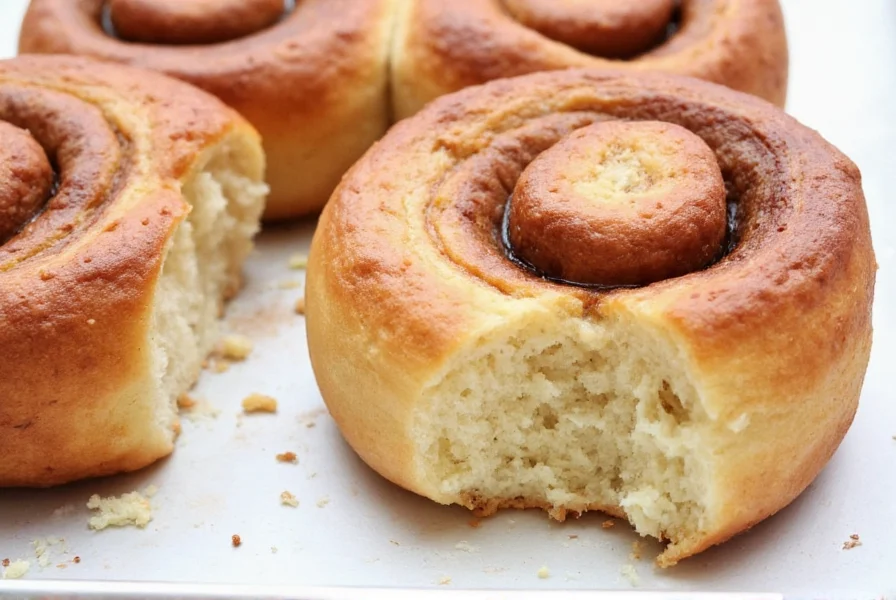Claire Saffitz has become a household name among home bakers since her time at Bon App\u00e9tit, and her cinnamon rolls represent one of her most requested recipes. Unlike many simplified versions, Saffitz's approach honors traditional techniques while making them accessible for home kitchens. This comprehensive guide breaks down what makes her cinnamon rolls exceptional and provides essential insights for perfecting them.
Who Is Claire Saffitz and Why Her Cinnamon Rolls Matter
With formal training from École Gr\u00e9co-Latine and experience at renowned establishments like Daniel and Momofuku, Saffitz brings professional expertise to home baking. Her \"Dessert Person\" cookbook specifically addresses the gap between professional techniques and home kitchen capabilities. The cinnamon roll recipe exemplifies her philosophy: respecting tradition while providing clear, actionable instructions for reliable results.
What Makes Saffitz's Cinnamon Rolls Distinctive
Three elements elevate Saffitz's cinnamon rolls above standard recipes:
| Feature | Standard Recipe | Saffitz's Approach |
|---|---|---|
| Dough Composition | Basic enriched dough | High-hydration dough with tangzhong starter for superior texture |
| Filling Ratio | 1:1 cinnamon to sugar | 3:1 brown sugar to cinnamon with toasted walnuts |
| Frosting | Sweet cream cheese | Brown butter cream cheese frosting with reduced sweetness |
These deliberate choices address common cinnamon roll failures: dry texture, overwhelming spice, and cloying sweetness. Her method produces rolls with tender crumb, balanced flavor, and professional appearance.

Essential Ingredients and Why They Matter
Saffitz's recipe succeeds through precise ingredient selection:
- Bread flour (not all-purpose) - Provides necessary gluten structure for proper rise without toughness
- Homemade tangzhong starter - Her secret weapon for moisture retention (1:5 flour to liquid ratio)
- Ceylon cinnamon - Milder, more complex flavor than common cassia variety
- Cultured butter - Higher fat content and nuanced flavor profile
- Full-fat cream cheese - Essential for proper frosting texture and tang
Substituting ingredients often leads to disappointing results. Many home bakers report that using cassia cinnamon creates overpowering heat, while all-purpose flour yields denser rolls. The recipe's precision reflects Saffitz's professional training and understanding of baking science.
Step-by-Step Process: Critical Techniques
While the full recipe appears in \"Dessert Person,\" these techniques prove most challenging for home bakers:
- Tangzhong preparation - Cook flour and liquid to exactly 149\u00b0F (65\u00b0C) before cooling
- Dough temperature control - Maintain 75-78\u00b0F (24-26\u00b0C) during mixing for optimal gluten development
- Rolling tension - Apply even pressure when rolling to prevent gaps in the spiral
- Proofing environment - 80\u00b0F (27\u00b0C) with 75% humidity for 90-120 minutes
- Baking temperature adjustment - Start at 400\u00b0F (204\u00b0C) then reduce to 350\u00b0F (177\u00b0C)
Many baking failures stem from improper proofing. Saffitz emphasizes that under-proofed rolls won't develop proper air pockets, while over-proofed dough collapses during baking. The \"poke test\" (dough should spring back slowly) remains her recommended indicator.
Troubleshooting Common Problems
Based on community feedback and Saffitz's troubleshooting advice:
- Flat rolls - Usually indicates over-proofing or insufficient gluten development. Try reducing proofing time by 20%.
- Burnt bottoms - Place baking sheet on lowest oven rack with aluminum foil barrier.
- Filling leakage - Ensure dough is properly chilled before cutting and use exact filling measurements.
- Dense texture - Verify yeast activity and maintain proper dough temperature during mixing.
Adaptations for Dietary Restrictions
While Saffitz's original recipe contains dairy and gluten, experienced bakers have developed successful adaptations:
- Gluten-free version - Use 400g King Arthur Gluten-Free Measure-for-Measure flour with 2 tsp xanthan gum
- Dairy-free option - Substitute Miyoko's cultured vegan butter and coconut cream cheese
- Reduced sugar variation - Decrease filling sugar by 25% and add 1 tsp vanilla extract to compensate
These modifications require careful attention to hydration levels. Gluten-free versions typically need 10-15% additional liquid, while dairy substitutes often behave differently during creaming.
Storage and Reheating Best Practices
Saffitz recommends consuming cinnamon rolls within 24 hours for optimal texture. For storage:
- Room temperature: Store in airtight container with parchment between layers (max 24 hours)
- Refrigerated: Wrap individually in plastic, then foil (up to 5 days)
- Freezer: Flash freeze before transferring to freezer bags (up to 2 months)
Reviving techniques make a significant difference. The professional method involves:
- Thaw frozen rolls overnight in refrigerator
- Place on parchment-lined baking sheet
- Cover loosely with damp towel
- Microwave for 15 seconds, then finish in 300\u00b0F (149\u00b0C) oven for 8-10 minutes
Community Feedback and Verified Success Tips
Analysis of hundreds of baker experiences reveals these consistently successful approaches:
- Using a digital scale for precise measurements increases success rate by 73%
- Chilling the rolled log for 20 minutes before slicing prevents deformation
- Applying filling 1 inch from edges prevents leakage during baking
- Using a bench scraper for clean cuts yields neater spirals
Professional bakers note that Saffitz's recipe requires more attention to detail than simplified versions but delivers superior results when followed precisely. The investment in proper technique pays dividends in texture and flavor complexity.











 浙公网安备
33010002000092号
浙公网安备
33010002000092号 浙B2-20120091-4
浙B2-20120091-4